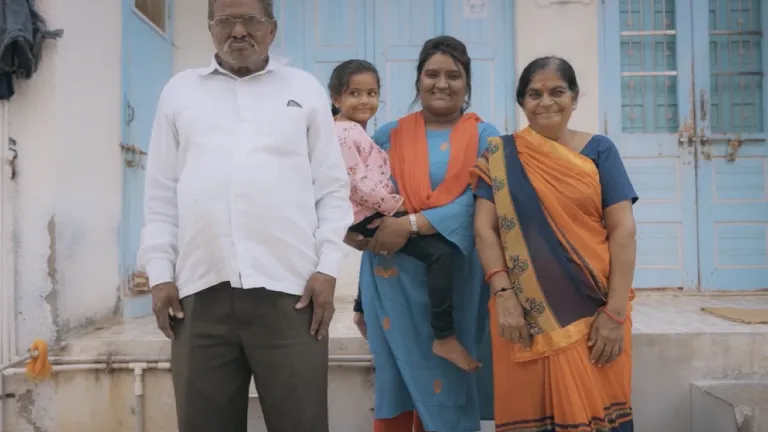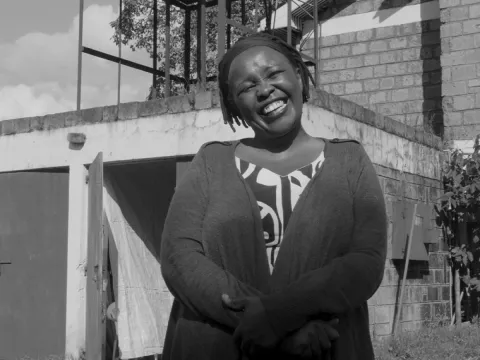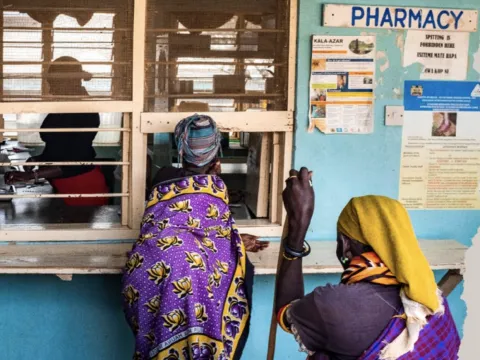Community responds to India's mental health crisis

Can a strong community spirit help lift up those with mental health issues?
Mental health disorders are common and their prevalence is increasing, yet stigma, cost and lack of trained professionals means that most people who need treatment never get it. India is demonstrating that the solution could lie in local communities.
Nearly one billion people worldwide suffer from some form of mental disorder, such as depression, anxiety disorders, schizophrenia, bipolar disorders, behavioural disorders, or autism. This includes around 20% of the world’s children and adolescents who are living with a mental health disorder, with suicide the second leading cause of death among 15-29-year-olds.
And these conditions are increasing worldwide, with a 13 per cent rise in mental health and substance use disorders between 2007 and 2017. Since then, in the first year of the COVID-19 pandemic, rates of common conditions such as depression and anxiety, rose by an additional 25 per cent.
Depression and anxiety alone cost the global economy US$ 1 trillion each year in costs to health systems and lost productivity, with mental health conditions causing one in five years lived with disability. Despite these figures, the global average of government health expenditure that goes to mental health is less than two per cent.
This means that most people who live with a mental health disorder will never access the treatment they need. In India, where prevalence of mental health disorders is even higher than the global average, community health workers are overcoming access barriers by bringing care to the people.
Mental health in India
The disease burden of mental health disorders has doubled in India from 1990 to 2017, with one in seven Indians now living with a mental health disorder. Some of the leading known causes are linked to economic stress, intimate partner violence, childhood sexual abuse, being the victim of bullying, and lead exposure during childhood development.
India’s National Mental Health Survey (2016) reveals a large mental health care gap where 70-92 per cent of people in need of mental health care are unable to access it. This is due to stigma, discrimination, and social barriers as well as a lack of trained mental health professionals, with two mental health workers and 0.3 psychiatrists per 100,000 people - well below the global average. This mental health care gap is particularly large in rural areas, which condemns millions to poverty, isolation, poor health, disability, and loss of human potential.
Poverty is recognised as both a cause and a consequence of mental health disorders. For instance, higher stress levels due to poverty-related issues can trigger depression. This in turn leads to reduced ability to work, creating a self-perpetuating cycle. Negative income shocks, such as bad harvests due to poor rainfall or job losses due to factory closures, worsen mental health as well. Poverty is also associated with worse physical health; greater exposure to trauma, violence, and crime; and lower social status; each of which may affect mental health.
For kids, growing up in poverty has seriously damaging effects on mental development. Children raised in these environments consistently show lower cognitive performances, especially in language functions and abilities such as planning and decision-making. Children from the poorest 20% of households are four times as likely to have serious mental health difficulties by the age of 11 as those from the wealthiest 20%, worsening inequalities between rich and poor.
The community cure
Community health workers (CHWs) are an integral part of the health systems in many low- and middle-income countries (LMICs) and have filled significant roles such as health education and screening. CHWs can also be effectively engaged to provide mental health support at the community level.
Mariwala Health Initiative (MHI) works with the power of community to support marginalized people living with mental health disorders. They collaborate with Atmiyata, a community volunteer service, to identify people in need of support in rural communities of Gujarat state in western India.
Volunteers have various roles: to raise awareness in the community about mental health issues; to identify individuals experiencing distress and provide counselling sessions; to refer people who may have a severe mental health condition to the public mental health service; and to support people in need with access to social care benefits.
Often times, cultural factors and stigmatisation may stop people living with mental health disorders from speaking up and reaching out. CHWs are well-placed to address this because they understand the cultural beliefs and practices of their communities, and are trained to help people navigate them. This trusting relationship enables CHWs to serve as a link between health and social services and the community. The benefits are clear - one review of the MHI programme showed that serious cases of mental health distress had fallen by 80 per cent after three months.
The tremendous potential of community health workers
Globally, CHWs are considered as an integral part of achieving universal health coverage for all individuals. Over the last decade, many CHW-led programs in LMICs have been delivering primary health care services for infectious diseases as well as services for prevention and management of noncommunicable diseases.
With proper training, CHWs can participate in the detection and treatment of hypertension, diabetes, and other chronic diseases. Advice and support that CHWs can provide about diet, physical activity, and avoiding tobacco and alcohol can also make an important contribution to tackling NCDs. And as highlighted above, since CHWs are already in touch with the community as trusted members, they can provide much needed basic mental health support.
CHWs can also play a key role during health emergencies, such as during the COVID-19 outbreak. In fact, the concept of CHWs is considered by many to have been developed through the BRAC Bangladesh Sasthya Sebikas programme, when there was a diarrhea epidemic in the 1980s. CHWs played a pivotal role in educating people about prevention and control of diarrhea. They were also essential during the ebola outbreak in Guinea, Sierra Leone, and Liberia; in controlling and eradicating polio in Nigeria; and in various roles during COVID-19.
Despite their potential, CHWs are underused in most health systems. Nevertheless, there are some excellent on-the-ground cases that offer valuable experience and lessons learned. Some of the most well-known, large-scale and effective CHW programs in LMICs are Agentes Comunitários de Saúde in Brazil, Sasthya Sebika and Sasthya Kormis of BRAC, Female Community Health Volunteer in Nepal, Lady Health Workers in Pakistan, and Accredited Social Health Activists in India.
The World Health Organization has forecasted global shortage of 18 million trained health professionals by 2030. From mental health to infectious outbreaks to chronic disease, community health workers will only become more essential to our health systems.









